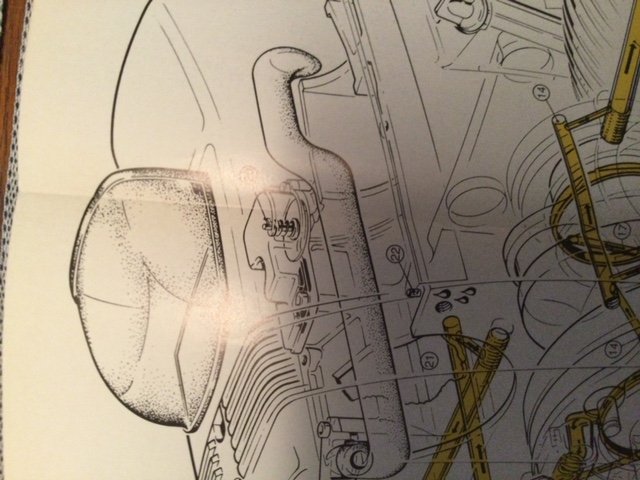This idea was brought up on another forum, and probably is an issue with just about any engine where pistons are moving in/out or up/down. When the pistons move from top dead center to bottom dead center, they squeeze the air that is in the interior of the engine case. On the Airheads, there's a crankcase ventilation system that comes up for discussion when it makes noise and/or results in oily mist getting out and into the carbs. This is a fairly simple system with either a disk held against the pressure by a spring or the later style reed valve that pushes open when air pressure increases. On the /2 engine, BMW devised a complicated disk system driven by the engine camshaft (I think) to open a hole at the precise time of the pistons moving to BDC. Excess pressure creates all kinds of problems with seals blowing out or at least the whipping of the oil and creating excess oily mist.
But it's clear to see there is no such system to alleviate the opposite problem when the pistons move from BDC to TDC. This movement tends to create a vacuum and in a small way fight the pistons that are trying to rise to the top. As I think about this, the only way for air to fill that vacuum is to come in through the seals, and mostly the rear main seal.
Really?? Is that the best they could do? How much of an issue is this? What about engines in general? Air coming in around the RMS for millions and millions of cycles throughout the life of the seal. Somehow that just seems bizarre if that is the way for air to get back into the case.
Enquiring minds want to know!
But it's clear to see there is no such system to alleviate the opposite problem when the pistons move from BDC to TDC. This movement tends to create a vacuum and in a small way fight the pistons that are trying to rise to the top. As I think about this, the only way for air to fill that vacuum is to come in through the seals, and mostly the rear main seal.
Really?? Is that the best they could do? How much of an issue is this? What about engines in general? Air coming in around the RMS for millions and millions of cycles throughout the life of the seal. Somehow that just seems bizarre if that is the way for air to get back into the case.
Enquiring minds want to know!



